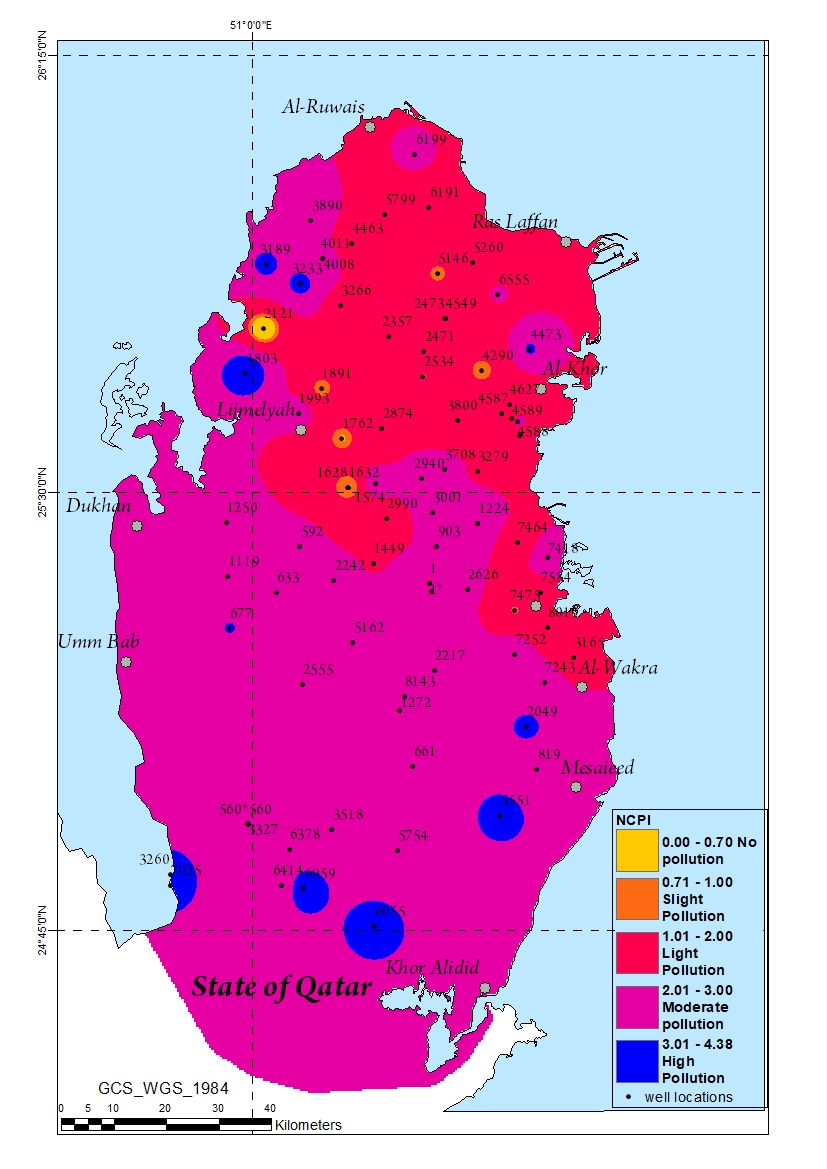2024 AIChE Annual Meeting
(638g) Assessment of Heavy Metals in Qatar's Groundwater: Implications for Water Quality and Human Health Impact
Authors
Yehia Manawi, Qatar Environment and Energy Research Institute
Jaber Al-Marri, Qatar Environment and Energy Research Institute
Huda Al-Sulaiti, Qatar Environment and Energy Research Institute
The quality of drinking water in Qatar relies heavily on its groundwater. This study investigates the monitoring of heavy metals, their distribution, and potential health impacts, offering crucial insights for effective groundwater management and human health protection. From January 2020 to December 2023, an extensive monitoring program analyzed groundwater samples using advanced analytical techniques like inductively coupled plasma-mass spectrometry and Ion Chromatography. Emphasizing the importance of monitoring heavy metals such as lead, arsenic, cadmium, chromium, and mercury, the study highlights their potential entry into groundwater through natural processes or human activities. Concentrations of these heavy metals were evaluated against international drinking water standards to assess health risks. Examination of 87 wells revealed a hierarchy of heavy metal prevalence, with average concentrations ranking highest for Sr > Si > B > P > Mo > Ba > Sb > Se > Tl > U > V > Ag > Cu > Al > As > Fe > Li > Zn > Cr > Mn > Co > Ni > Pb > Th > Be > Cd. Notably, Boron, Molybdenum, and Strontium concentrations exceeded WHO guidelines, ranging from 0.05 to 4.15 ppm, 0.001 to 0.32 ppm, and 0.016 to 24.34 ppm respectively. Recognizing the significant risks posed by heavy metals and metalloids to human health, even at low concentrations, underscores the need for proactive measures. This research provides vital insights into groundwater resource management and environmental planning, facilitating strategies to prevent and mitigate heavy metal contamination. Furthermore, the study explores the chronic daily intake (CDI) of investigated heavy metals (Ag, Mn, Cr, V, Mo, and Sr) through ingestion and dermal pathways, revealing a range of 1.4 × 10^-5 - 6.7 × 10^-1 mg/kg/day. Additionally, the Nemerow comprehensive pollution index (NCPI) highlights the multifaceted nature of pollution, urging holistic mitigation approaches.


